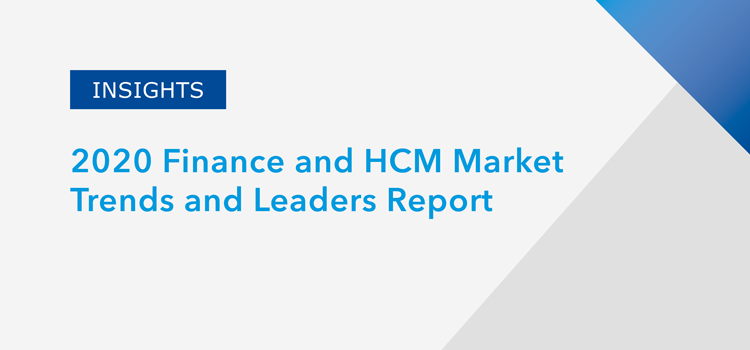Insights for Private Colleges and Universities: Tambellini’s 2020 Finance and HCM Market Trends and Leaders Report
Tambellini Author

With the publication of Tambellini’s 2020 Financial Management and Human Capital Management Systems US Higher Education Market Share, Trends, and Leaders Report, many institutions can benefit from the in-depth view of the finance and HCM technology selections across the higher education landscape. Private colleges can draw specific insights from the report’s information and help guide their technology strategies moving forward.
In this year’s report, 58% of the 2019 finance and HCM selections were made by private colleges and universities. While it is true that private school make up a larger portion of the market (52% according to IPEDS data), there are unique factors in this segment that can contribute to these selections happening at a higher rate.
Less Is More
While technology selections involve input from multiple points within an institution or system, more commonly than not, in a private college the decision-making process is a bit different. For most institutions, there is less oversight and more autonomy. Often the level of accountability lies at the level of a Board of Trustees. There is less oversight from state government, no state procurement, and, often, no requirements to go through an RFI/RFP process. In short, fewer requirements equal much faster decision making.
As a note to this point, while private institutions may encounter fewer rules, that does not mean that their decisions are done with speed as the goal. Many institutions take care to ensure that the decision isn’t too fast, spending time gathering requirements, discussing pain points across departments, understanding more effective and efficient business processes, and investigating how vendor solutions can meet their needs.
Competition Is Good
In general, the finance and HCM products in the market are more mature, and the competition among vendors is healthy. Smaller colleges usually have more centralized departments and less complex business process that can align to what vendors are offering within their solutions. This streamlined environment gives institutions the ability to evaluate multiple solutions that can meet their needs in a less resource intensive and time-consuming process.
COVID-19
Before the COVID-19 pandemic, there was a momentum building among private colleges and universities around technology selections. This pent-up energy often comes from the individual business units across the campus. Although the pandemic has created a pause, that same energy will need to be satisfied. IT leaders can benefit by focusing this energy on work that can be done in advance of technology selections and ensure that their institutions are ready. Topics include:
- Building and clarifying a data strategy
- Identifying reporting needs at the institution and the department level
- Identifying integration strategies, including selection and deployment of iPaaS solutions
What the Future May Hold
As this segment of the market continues to work through how their environments may change, traditional higher education will no doubt consider a more blended approach to teaching and learning. Faculty who have been reluctant to change their face-to-face content and have been forced to teach online may see its benefits. However, there are still some areas where face-to-face instruction cannot be replaced by virtual learning, for example, with labs and research, and in institutions where personal interactions in the classrooms are values and cannot be replicated virtually. IT leaders, particularly those with oversight of academic technology, will play a more critical role in supporting changes in pedagogy.
Data continues to play a key role in informing strategy. CIO’s will be on the forefront of making sure that administrators have better and more access to data and COVID-19 will bring about new needs to support unique efforts such as contact tracing, student success in blended environments, and more.
Categories
- Academic Administration
- Advancement
- Content Management
- CRM Platforms
- Customer Experience (CX)
- Cybersecurity
- Data Management and Analytics
- Enterprise Portals and Mobile Apps
- Event Management
- Finance
- HCM/HR
- IT Tools and Infrastructure
- Life at Tambellini
- Services
- Student
- Teaching and Learning
- Technology Leadership
- Thought Leadership
- Uncategorized
Share Article:

Other Posts From this Author:
© Copyright 2024, The Tambellini Group. All Rights Reserved.